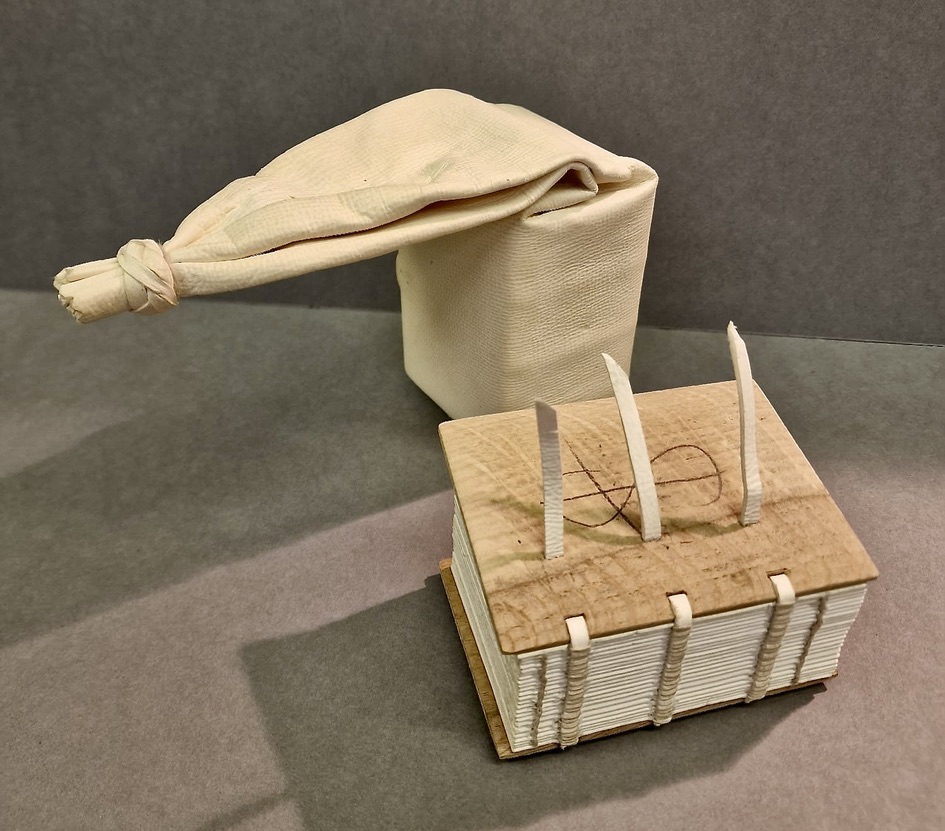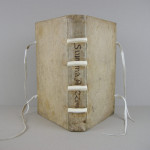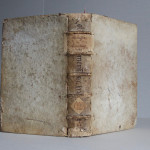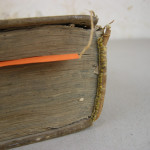7th-11th July
Recreating the colours on the Medieval palette: Western, Hebrew and Islamic
Tutor: Cheryl Porter
This class will study the colours (made from rocks, minerals, metals, insects and plants) that were processed to produce the paints used by artists throughout the medieval era. The focus will be on manuscript art – Islamic, Hebrew and European. Participants will re-create the colours using original recipes. Illustrated lectures will address history, geography, chemistry, iconography and conservation issues. Practical making and painting sessions will follow these lectures. No previous experience is necessary.
Cheryl Porter is founder and director of the Montefiascone Project. She trained as a book conservator in London and has worked as a conservator, collections manager and consultant for libraries and museums in many countries, including Australia, USA, Egypt and in Europe. She was deputy Director of the Dar al-Kutub (National Library) and Thesaurus Islamicus Foundation Manuscript Project in Egypt from 2008-2011. She has published widely on the topic of colours used to paint in manuscripts and is a Professional Associate in the American Institute for Conservation.
14th-18th July
Safina bindings
Tutors: Kristine Rose-Beers and Fatma Aslanoglu
Lecture: Alison Ohta
Safina bindings have a long narrow format, characterised by sewing on the short edge. Often, they are delicate structures with limp bindings depicted in portraits of poets and princes. Frequently, Safina hold ornately decorated volumes of poetry or anthologies. This course will look at Safina bindings produced across the Islamic world, using examples drawn from the collections of Cambridge University Library and the Chester Beatty Library. Participants will make two models: the first, a typical Safina with limp leather binding and endbands sewn in a traditional Islamic style. A second soft textile and leather structure, not in the Safina format, but also seemingly designed for small literary collections will be produced.
As well as the practical element, this class will explore the historical and cultural significance of Safina bindings within the broader context of Islamic art and literature. Emphasis will be placed on the intricate craftsmanship and artistic expression that characterise these bindings, highlighting the fusion of functionality and aesthetics that define the genre.
Kristine Rose-Beers ACR is Head of Conservation and Heritage for Cambridge University Libraries and an accredited member of the Institute of Conservation. Her research interests include the conservation of Islamic manuscript material, early binding structures and the use of pigments and dyes in medieval manuscripts. Kristine graduated from the Conservation programme at Camberwell College of Arts, London in 2002 before beginning work at Cambridge University Library, where her fascination with Islamic manuscript material was cemented.
In 2008 Kristine moved to Ireland to work at the Chester Beatty as book conservator for the Turkish collection, and in 2011 she was appointed Assistant Keeper (Conservator of Manuscripts and Printed Books) at the Fitzwilliam Museum, Cambridge. After four years in Cambridge, Kristine’s passion for the unique Chester Beatty collections brought her back to Dublin where she worked as the Head of Conservation until 2023. Kristine has taught and lectured internationally. She is a member of the Institute of Conservator-Restorers in Ireland (ICRI) and the Kairouan Manuscript Project (KMP).
Fatma Aslanoglu is Conservator for Gulf History and Arabic Science at the British Library, where she specialises in preserving rare manuscripts and historical materials. With a decade of experience in book and paper conservation, her expertise is primarily focused on Islamic manuscripts and other significant archival materials. Fatma holds a bachelor’s degree in Traditional Turkish Arts (Illumination-Miniature Main Art Branch) from Marmara University and has pursued advanced studies in the same field at Mimar Sinan University. During her studies, she took a conservation module, integrating conservation techniques into her artistic practice, which later shaped her professional career in cultural heritage preservation.
Previously, Fatma worked as a project conservator at University College London (UCL) Special Collections and as a freelance conservator at Codex Conservation. In these roles, she gained valuable experience in conserving a diverse range of historical documents, including Islamic manuscripts, medieval parchments, early printed books, and modern archival materials. Earlier in her career, Fatma worked as a book and paper conservator at the Süleymaniye Library, where she made significant contributions to the preservation of numerous Islamic manuscripts. This experience further refined her expertise in manuscript conservation and deepened her commitment to the preservation of cultural heritage.
21st-25th July
Girdles, Books and Prayers
Tutors: Jim Bloxam and Shaun Thompson

This course will enable participants to make a girdle book based on an English fifteenth-century breviary. The model girdle book will include features derived from the small number of known examples of surviving girdle books. Jim first taught this course at Montefiascone in 2003 with the late Dr Nicholas Hadgraft; it will be wonderful to honour Nick as we reprise this course.
The tutors will guide the course participants as they make their own girdle book. Processes will include sewing the text block, shaping and attaching oak boards and covering with alum-tawed skin. A clasp will be fashioned from metal alloy and a secondary covering will extend below the primary cover of the book; this extension will conclude with a Turk’s head knot.
Jim Bloxam is the former Head of Conservation and Collection Care, Cambridge University Library, UK (retired June 2022). He is now Senior Book Tutor at City and Guilds of London Art School on the BA (Hons) Conservation: Book and Paper course. His research interests lie mainly in the history of books, their structural qualities and their cultural context. He has taught historical book structures in the UK, Europe and the US, focusing mainly on European book structures. He has taught courses on the Montefiascone Conservation Project Study Programme since 1998. He seeks to communicate his knowledge, understanding and enthusiasm for the sophisticated technology of the codex structure.
Shaun Thompson is the Conservation Manager at Cambridge University Library. He is a dedicated advocate for book and paper conservation in the heritage sector, specialising in the care and repair of manuscripts and printed books. Shaun’s research interests include early European book structures, the history of books, their structural characteristics and the materials and innovative mechanisms used to create them. He has presented his work at international conferences and published his research in peer-reviewed journals. He has taught at leading conservation schools such as West Dean College of Arts, City and Guilds of London School of Art, University of Amsterdam, and the Montefiascone Conservation Project in Italy. Shaun has made significant contributions to the field of Conservation, notably through his work as a teacher and mentor to conservation students in the UK and abroad.
28th July – 1st August
Reconstruction of 16-17th century parchment binding with raised sewing supports covered with alum-tawed leather
Tutors: Nadine Dumain and Leila Sauvage
This workshop will explore in depth the materials and techniques used for 16th and 17th century European bindings (textblock and endbands). The starting point is a historical binding observed in the French Library of the Jean Monet Faculty in Sceaux, France. Besides its refined sewing, the specificity of this book structure is that the parchment cover has been cut out where the sewing supports are raised. Instead of parchment, alum-tawed leather has been inserted under the parchment and over the sewing supports. Participants will be guided through all the steps of the making of such a book: sewing of the textblock on single raised cords, double endbands, lacing-in the boards, covering of the raised sewing supports with alum-tawed leather, preparation and covering with parchment, and fastening laces in alum-tawed leather.
For the more advanced and curious participants, the lecturers can offer variants to explore how this historical bookbinding could be made stronger. Participants can compare the results obtained with the historical reconstructions. The gatherings will be sewn with the packed sewing technique and participants will study the techniques of its making and the advantages for this book. Second, back-bead endbands will enable anchoring of the endbands in each gathering so as to strengthen it considerably. In this way, the aesthetic aspects of this book remain, while the structure is reinforced.
Nadine Dumain graduated in book binding and gilding from the renowned National Arts and Graphic Art School Estienne (Paris) in 1990. For the last 25 years, she has been practising as a book binder and book conservator at the paper mill Moulin du Verger, France. Throughout her career, she has collaborated with book conservator Christopher Clarkson and papermaker Jacques Bréjoux in the development of professional workshops on paper case bindings. She also teaches book binding to conservators and curators at the mill, at the Estienne School (Paris) and at the University of Amsterdam.
Leila Sauvage graduated from the Book and Paper Conservation program of the Paris-Sorbonne University in 2010. Since 2011, she has worked at the Rijksmuseum in Amsterdam. In 2020, she was appointed lecturer and coordinator of the book and paper conservation program at the University of Amsterdam. She continues working part-time at the Rijksmuseum on conservation science projects applied to paper conservation. Alison Ohta is currently Director of the Royal Asiatic Society of Great Britain and Ireland. She completed her thesis at SOAS (London University) on Mamluk bindings and has published and lectured extensively on the subject.




